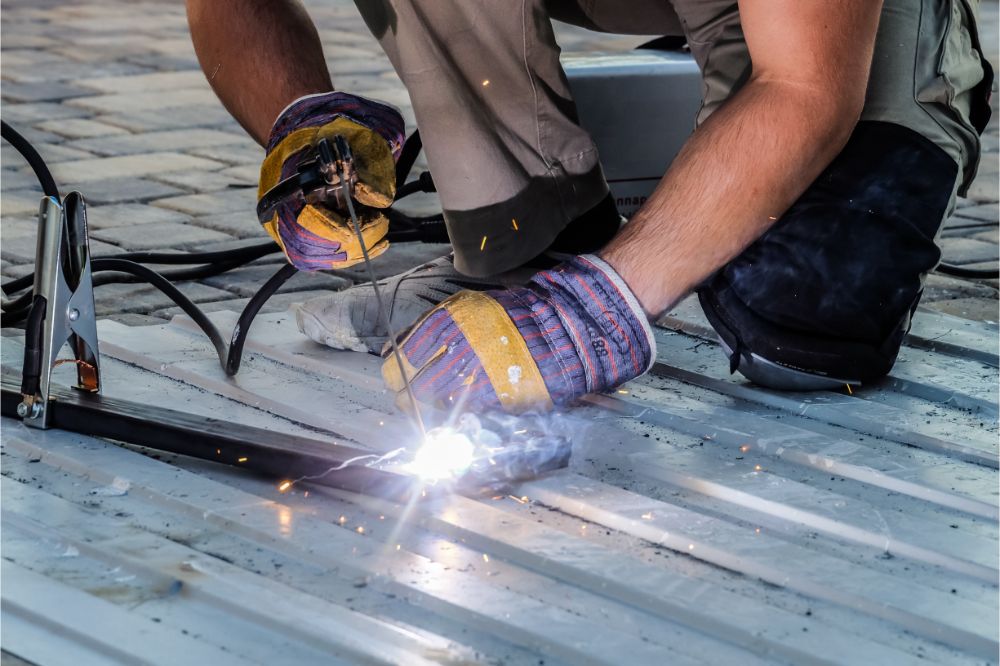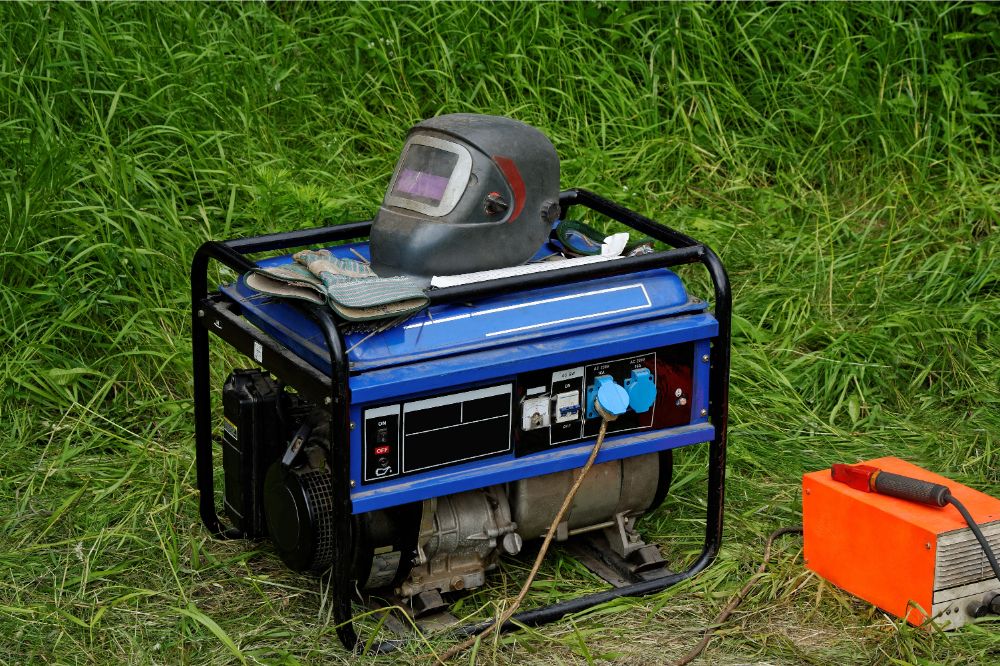Before you can decide the size of generator to run your 140 amp welder, you need to understand a little bit about how welders work and the different types of generators available. Welders use electricity to create an arc between two pieces of metal, which melts the metal and allows it to be joined together. The amount of electricity required depends on the type of welder, the thickness of the metal, and the desired results.
There are three main types of generators: portable, standby, and industrial. Portable generators are typically used for recreational purposes, such as camping or tailgating. Standby generators are permanently installed and wired into your home’s electrical system; they turn on automatically during a power outage.
Industrial generators are used in commercial and industrial applications and can be either portable or standby. Now that you know how welders work and the different types of generators available, you can determine what size generator to run your 140 amp welder.
- Determine the Suitable Size Generator You Need
- Importance of the Size
- How many watts does a 140 welder use?
- Few Elements That Will Help You Buy A Generator
- Other Factors To Consider: Buying A Generator For a 140 amp Welder.
- Inverters Vs. Transformers
- Determine Your Welder’s Input Power
- How to Select a Specific Generator For a 140 AMP Welder
- Conclusion
Determine the Suitable Size Generator You Need
The first step is calculating the peak watts of the appliances and electronic devices you want to run. You can find the wattage requirements in the owner’s manuals or on the labels of the appliances. For example, a 100-watt light bulb will use about 1 amp of power at 120 volts.
Next, you need to determine the start-up wattage of your common devices. It is usually about three times the running wattage. So, a 100-watt light bulb would have a start-up wattage of about 300 watts.
Now that you know the peak watts required for your appliances and devices, you can select a generator with enough output to handle those loads. For example, a 3,000-4,000 watt generator would be sufficient to run a 100-watt light bulb and other small appliances.
Importance of the Size
It’s a common question: does size matter when it comes to generators? Well, it depends. If you’re running a small welder that doesn’t require a lot of power, then a small generator should be just fine. However, if you’re running a larger welder that needs more power, you’ll need a larger generator.
The following are points to remember when deciding what size generator to use for your welder:
- Consider the watts required by your welder. Most welders will have this information listed on the welding machine.
- Consider the amperage output of the generator. It will be listed in watts as well.
- Think how long you’ll need to run the welder.
A smaller generator will suffice if you only need to run it for a short period. However, if you plan on running the welder for extended periods, you’ll need a larger generator to handle the load.
The bottom line is that size does matter when it comes to generators – but it all depends on your specific needs. Be sure to consult with an expert before making your final decision to ensure that you get the suitable generator size for your welding needs.
How many watts does a 140 welder use?
Even the smallest 140 welders will require at least a 3,000-watt generator. A welder with a 20 to 30-amp output will require nearly double that power.
Few Elements That Will Help You Buy A Generator
When purchasing a generator to run an arc welder, there are several factors you need to take into account. The most crucial factor is the required amperage of the welder. Other factors include:
- Welder’s duty cycle
- Welding type
- Power requirements of other equipment that is used with the welder
Ultimately, the required amperage is determined by the size of the electrode, the welding rod, and the metal thickness. For instance, a 1/16″ electrode welding on thin metal will require less amperage than a 3/32″ electrode welding on thick metal.
The duty cycle is the amount of time in a 10-minute period that you can weld continuously without overloading the generator. For example, if your welder has a 60% duty cycle, you can weld 6 out of every 10 minutes without damaging the generator.
The type of welding being done also affects the size of the generator. For example, arc welding requires more output power than stick welding, and MIG or TIG welding requires even more power if you’re doing a lot of starts and stops while welding, which will also require more power from the generator.
Finally, it would be best if you considered any other equipment that the generator will power while you’re welding. This includes lights, fans, and power tools. All of this equipment will add to the overall load on the generator.
Other Factors To Consider: Buying A Generator For a 140 amp Welder.
While considering the perfect size generator and its power, there are a few other factors to keep in mind when purchasing a generator for a 140 amp welder. One is high altitude kits; if you use the welder at high altitudes, you’ll need a generator that can output enough power to compensate for the thin air. Another factor is run time; how long do you need the generator to run before refueling? And finally, the noise level is something to consider, especially if you’ll be using the welder close to other people. Choose a generator that runs quietly so as not to disturb others or cause safety concerns.
Inverters Vs. Transformers
Two main types of generators are used to power welding machines: inverter generators and transformers. When deciding which type of generator to use for your welding machine, consider the following factors.
Size and weight
Inverter generators are smaller and lighter than transformers, making them easier to transport.
Efficiency
Inverters are more efficient than transformers because they don’t waste as much energy in the form of heat. In other words, they consume less fuel.
Cost
Transformers are cheaper generators than inverters and are easier to find parts for if they break down.
Load Capacity
Transformers are also more rugged and can easily handle being dropped or knocked around. Thus, they can handle higher loads than inverters.

Determine Your Welder’s Input Power
Finding your welder’s input power can be daunting if you need to become more familiar with electrical systems. However, it’s quite simple once you know where to look. The first step is to identify the type of welder you have. There are two main types of welders: AC (alternating electrical current) and DC (direct electric current). Each type requires a different amount of power to operate.
AC welders are the most common type of welder. They use an electrode that alternates between positive and negative charges to create an arc. This arc is used to heat the metal, which melts the metals together and creates a weld. AC welders require a power input of 110 volts or 220 volts.
Usually, DC welders use an electrode that is always charged with the same polarity. It creates a more stable arc, ideal for welding thicker materials. DC welders require a power input of 115 volts or 230 volts.
Once you know the type of welder you have, finding the input power is simply a matter of consulting your owner’s manual. The manual will list the specific amps by voltage requirements for your welder. If you don’t have the manual, you can find this information online by searching for your welder model number. Now that you know how to find your welder’s input power, it’s time to start shopping for generators!
How to Select a Specific Generator For a 140 AMP Welder
When it comes to choosing the best generator for a 140 AMP welder, there are a few things you need to take into consideration. First, you need to ensure that the generator is powerful enough to handle the load. A 140 AMP welder can draw a lot of power supply, so you need to ensure that the welding generator can provide enough power.
Secondly, you must ensure that the generator engine is stable and provides a consistent power supply. Many welders will require a very stable power source, so you must ensure that the generator power factor can provide that. Moreover, ensure the generator is durable and can withstand heavy use. Many inverter welders will be used in very tough conditions, so you need to ensure that the generator can handle that.
Remember to consider the fuel type – petrol or diesel? – what will be most convenient for you? If you have access to petrol, it’s generally the cheaper option; however, diesel generators tend to be more durable and require less maintenance.
Next, think about what suitable generator size you’ll need. For example, the wattage output required for a 140 AMP welder is approximately 11,000 watts; however, it’s always best to choose a type of generator with a slightly higher wattage output to account for any other devices or extra tools you might want to power with it.
Finally, consider any additional features that might be important to you, such as an automatic shut-off or low-oil indicator. By keeping these factors in mind, you can be sure to choose the efficient generator for your needs.
Conclusion
A small generator should suffice if you’re doing light-duty welding, such as for household projects. However, if you’re planning on using the welder for more heavy-duty projects, such as metal fabrication, you’ll need a larger generator that can provide enough power.

